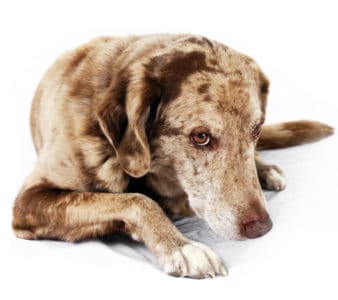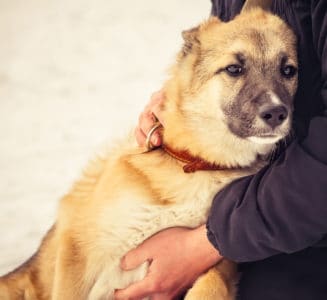Rocky’s Viewpoint

One day last week, we had a new potential boarding client come with her 2 year old great dane. When they came through th e front door, the dog started barking and lunging at me, despite the fact that I wasn’t looking at or otherwise engaging him.
e front door, the dog started barking and lunging at me, despite the fact that I wasn’t looking at or otherwise engaging him.
A bit later, I bent over with my side to the dog to get some business cards for the owner and the dog lunged at me getting very close to the side of my face, all the time barking. I could feel his breath on my cheek. I wasn’t doing anything that I believed was confrontational.
The owner began talking about the dog’s fears, and how the last time they boarded him, he cleared a 6 ft. fence to get away from the facility. She admitted that lunging and barking was what the dog did regularly with people he didn’t know well. Obviously this dog isn’t a good candidate for boarding because of his fear and anxiety.
Fear and anxiety in dogs seems to be more prevalent these days. I don’t know if that’s really true, but we’re getting more calls requesting help with noise phobias, fears of certain objects and people, separation anxiety, fear aggression, and more. Just like with the great dane, we want to help.
Fear is a feeling of apprehension resulting from a situation, person or object that presents an external threat to the dog, whether the threat is real or not, as was the case with the great dane. Anxiety on the other hand, stems from the anticipation of future dangers from unknown or imagined sources, generally resulting in a fear or similar type response. Separation anxiety is one such example.
With most dogs, fears and anxieties develop when the dog reaches social maturity, between 12 to 36 months of age. Some dogs also develop old-age anxieties such as separation anxiety or thunderstorm phobias.
Medical issues aside, with some dogs, it’s genetic – they have a genetic predisposition toward fearfulness. Most of the time though, it’s due to either something that’s happened to them, or due to experiences they haven’t had but should have had, such as early socialization. Lack of proper early socialization is one of the most common reasons why dogs develop fears and anxieties.

This is a natural instinct with many people, but with dogs, it only serves to reward and reinforce the behavior.
If the fear is new, you should get a thorough check up from your veterinarian to make sure there’s no medical reason for the fear.
For mild or moderate fears and anxieties, simply ignoring the behavior lets the dog know everything’s OK. You can also try distraction techniques, such as playing ball or working on training commands during a thunderstorm if your dog has a thunderstorm phobia.
For severe cases, there are medications, but those require prescriptions from a veterinarian. In central Florida, we are very lucky to have a veterinarian who specializes in animal behavior. Her name is Dr. Lynn Honeckman and her business is called Veterinary Behavior Solutions. She works with you, your veterinarian, and sometimes a positive reinforcement trainer to help resolve the problem. We’ve been referring to her for some time now, with good success. We also have referred to a few trainers in the area who have experience in animal behavior, again with good success.
Living in fear is very stressful, and will take its toll on the health and well-being of your beloved pet. If this is an issue with your dog, please take action immediately. And if we can be of any help, please contact us.